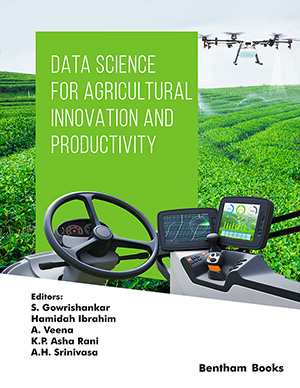Abstract
Single-cell RNA-sequencing (scRNA-seq) is a rapidly growing field in transcriptomics, which generates a tremendous amount of gene expression data at the single-cell level. Improved statistical approaches and tools are required to extract informative knowledge from such data. Gene network modeling and analysis is one such approach for downstream analysis of scRNA-seq data. Therefore, newer and innovative methods have been introduced in the literature. These approaches greatly vary in their utility, basic statistical concepts, models fitted to the data, etc. Therefore, we present a comprehensive overview of the available approaches for gene network modeling and analysis in single-cell studies, along with their limitations. We also classify the approaches based on different statistical principles and present a class-wise review. We discuss the limitations that are specific to each class of approaches and how they are addressed by subsequent classes of methods. We identify several biological and methodological challenges that must be addressed to enable the development of novel and innovative single-cell gene network inference approaches and tools. These new approaches will be able to analyze the singlecell data efficiently and accurately to better understand the biological systems, increasing the specificity, sensitivity, utility, and relevance of single-cell studies. Furthermore, this review will serve as a catalog and provide guidelines to genome researchers and experimental biologists for objectively choosing the better gene network modeling approach.
Keywords: Single-cell, scRNA-seq, gene networks, models, classification, statistical approach, challenges.
[http://dx.doi.org/10.1038/nmeth.2764] [PMID: 24524133]
[http://dx.doi.org/10.1186/s13059-016-0927-y] [PMID: 27052890]
[http://dx.doi.org/10.1016/j.molcel.2015.04.005] [PMID: 26000846]
[http://dx.doi.org/10.1101/gr.190595.115] [PMID: 26430159]
[http://dx.doi.org/10.1101/gr.110882.110] [PMID: 21543516]
[http://dx.doi.org/10.1038/srep39921] [PMID: 28045081]
[http://dx.doi.org/10.1038/nrg3833] [PMID: 25628217]
[http://dx.doi.org/10.3390/genes12121947] [PMID: 34946896]
[http://dx.doi.org/10.1093/bib/bbaa190] [PMID: 34020546]
[http://dx.doi.org/10.1186/s12859-018-2217-z] [PMID: 29914350]
[http://dx.doi.org/10.1016/j.cels.2020.02.003] [PMID: 32135093]
[http://dx.doi.org/10.1093/bioinformatics/btaa576] [PMID: 33026066]
[http://dx.doi.org/10.1038/s41592-019-0690-6] [PMID: 31907445]
[http://dx.doi.org/10.1038/s12276-020-00528-0] [PMID: 33244151]
[http://dx.doi.org/10.1093/bioinformatics/btx194] [PMID: 28379368]
[http://dx.doi.org/10.1371/journal.pone.0169605] [PMID: 28056073]
[http://dx.doi.org/10.1126/science.1216142] [PMID: 22323807]
[http://dx.doi.org/10.1093/bioinformatics/btv257] [PMID: 26072513]
[http://dx.doi.org/10.1093/bioinformatics/btv325] [PMID: 26002886]
[http://dx.doi.org/10.1371/journal.pone.0012776] [PMID: 20927193]
[http://dx.doi.org/10.1371/journal.pcbi.1007471] [PMID: 32716923]
[http://dx.doi.org/10.1088/1361-6420/33/2/025004]
[http://dx.doi.org/10.1186/s12859-016-1109-3] [PMID: 27277014]
[http://dx.doi.org/10.1093/bioinformatics/btx575] [PMID: 28968704]
[http://dx.doi.org/10.1016/j.celrep.2022.110333] [PMID: 35139376]
[http://dx.doi.org/10.1016/j.gene.2018.02.044] [PMID: 29458166]
[http://dx.doi.org/10.1093/bioinformatics/btw729] [PMID: 27993778]
[http://dx.doi.org/10.1016/j.cels.2017.08.014] [PMID: 28957658]
[http://dx.doi.org/10.1371/journal.pone.0158247] [PMID: 27380516]
[http://dx.doi.org/10.1186/1471-2105-10-336] [PMID: 19832992]
[http://dx.doi.org/10.3390/e22111205] [PMID: 33286973]
[http://dx.doi.org/10.1093/bioinformatics/btp211] [PMID: 19477983]
[http://dx.doi.org/10.1142/9789813207813_0053] [PMID: 27897008]
[http://dx.doi.org/10.1038/nmeth.4463] [PMID: 28991892]
[http://dx.doi.org/10.1186/s12864-016-3075-6] [PMID: 27640124]
[http://dx.doi.org/10.1371/journal.pbio.0050008] [PMID: 17214507]
[http://dx.doi.org/10.1093/nar/gkaa1014] [PMID: 33170214]
[http://dx.doi.org/10.1109/TCBB.2013.99] [PMID: 24334400]
[http://dx.doi.org/10.1186/s12918-018-0581-y] [PMID: 29801503]
[http://dx.doi.org/10.1038/nbt.3154] [PMID: 25664528]
[http://dx.doi.org/10.1073/pnas.1610609114] [PMID: 28584094]
[http://dx.doi.org/10.1186/s12859-016-1235-y] [PMID: 27600248]
[http://dx.doi.org/10.1073/pnas.1911536116] [PMID: 31822622]
[http://dx.doi.org/10.1016/j.patter.2020.100139] [PMID: 33336197]
[http://dx.doi.org/10.1186/s13059-020-02100-5] [PMID: 32746932]
[http://dx.doi.org/10.1038/s43588-021-00099-8]
[http://dx.doi.org/10.1016/j.patter.2022.100434] [PMID: 35510185]
[http://dx.doi.org/10.1093/bioinformatics/btp406] [PMID: 19574285]
[http://dx.doi.org/10.1371/journal.pone.0013397] [PMID: 21049040]
[http://dx.doi.org/10.3390/e22040427] [PMID: 33286201]
[http://dx.doi.org/10.1016/j.ygeno.2021.02.014] [PMID: 33662531]
[http://dx.doi.org/10.1186/s13059-020-02132-x] [PMID: 32854757]
[http://dx.doi.org/10.1093/bioinformatics/btz453] [PMID: 31197307]
[http://dx.doi.org/10.1038/s41576-018-0088-9] [PMID: 30617341]
[http://dx.doi.org/10.1016/j.jgg.2017.03.001] [PMID: 28642063]
[http://dx.doi.org/10.1093/bioinformatics/bty716] [PMID: 30165436]
[http://dx.doi.org/10.1371/journal.pcbi.1000117] [PMID: 18704157]
[http://dx.doi.org/10.3389/fgene.2021.617282] [PMID: 33828580]
[http://dx.doi.org/10.1038/nmeth.3773] [PMID: 26901648]
[http://dx.doi.org/10.1007/s40484-016-0089-7]
[http://dx.doi.org/10.1093/bib/bbw057] [PMID: 27373736]
[http://dx.doi.org/10.15252/msb.20188746] [PMID: 31217225]
[http://dx.doi.org/10.1038/nmeth.4380] [PMID: 28759029]
[http://dx.doi.org/10.1038/s41587-019-0290-0] [PMID: 31611697]
[http://dx.doi.org/10.1126/science.aau0730] [PMID: 30166440]
[http://dx.doi.org/10.1038/s41587-021-00927-2] [PMID: 34083792]
[http://dx.doi.org/10.3389/fcell.2016.00089] [PMID: 27656642]
[http://dx.doi.org/10.1038/s41467-018-07115-y] [PMID: 30389926]
[http://dx.doi.org/10.1016/j.cell.2014.04.005] [PMID: 24766814]
[http://dx.doi.org/10.1038/nrg.2016.98] [PMID: 27616569]
[http://dx.doi.org/10.1111/j.1749-6632.2010.05388.x] [PMID: 20392242]
[http://dx.doi.org/10.1038/31960] [PMID: 9582075]
[http://dx.doi.org/10.1038/nature01304] [PMID: 12478301]
[http://dx.doi.org/10.1101/264853]
[http://dx.doi.org/10.1371/journal.pcbi.1004575] [PMID: 26600239]
[http://dx.doi.org/10.1016/j.compbiolchem.2021.107512] [PMID: 34044202]
[http://dx.doi.org/10.1038/s41596-020-0336-2] [PMID: 32561888]
[http://dx.doi.org/10.1093/bioinformatics/btx605] [PMID: 29028984]































